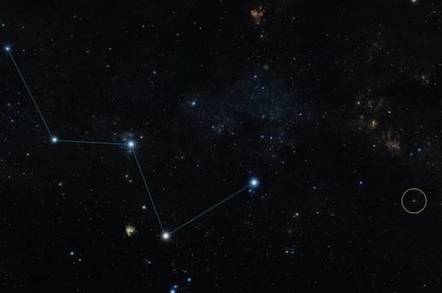Nearby exoplanets circle naked-eye-visible star
HARPS-N search finds rocky planets just 21 light years away

Just a couple of weeks after NASA announced the “Earth twin” (that might not be), astronomers working at the Italian-operated HARPS-N spectrograph have turned up four exoplanets just 21 light-years distant.
Even better, for those who like picking out stars but lack access to the Telescopio Nazionale Galileo at the Roque de los Muchachos Observatory in the Canary Islands, host star HD 219134 is visible to the naked eye, if you're somewhere you can see the constellation Cassiopeia*.
HD 219134 is a K-dwarf star, and was one of 51 selected for the HARPS-N (High Accuracy Radial velocity Planet Searcher for the Northern hemisphere) program.
As this NASA image shows, HD 219134 lies “just off the 'W' shape of the constellation”, as NASA says.
Reported in this Arxiv paper, now accepted for publication in Astronomy and Astrophysics, the discovery is the first result to come out of the HARPS-N's Rockey Planet Search program.
Three of the four planets circling HD 219134 are inner super-Earths and the fourth is an outer “sub-Saturn” mass planet, the whole system covering orbits between .038 astronomical units (very, very close) and 2 AU from the star.
The nearest planet – too hot for life, The Register supposes - whips around its star in just 3.0937 Earth days, making it “the nearest known transiting planet” so far discovered. It's got a mean density similar to Earth, packing 4.46 our mass into just 1.6 Earth radii. The most distant small-Saturn star has an orbit of a little over three years. ®
*Bootnote: Cassiopeia is visible year-round in the Northern Hemisphere, but only in late spring south of the equator. ®








 User Center
User Center My Training Class
My Training Class Feedback
Feedback











